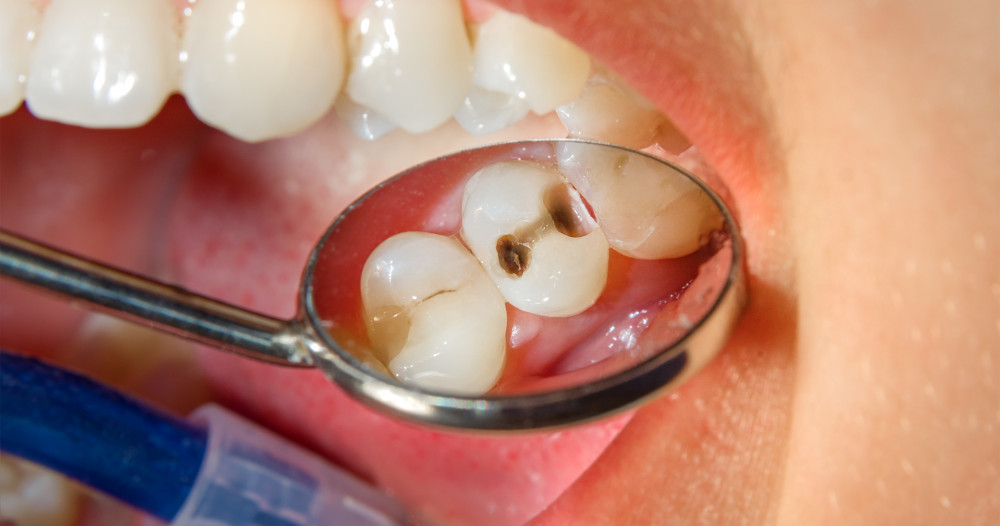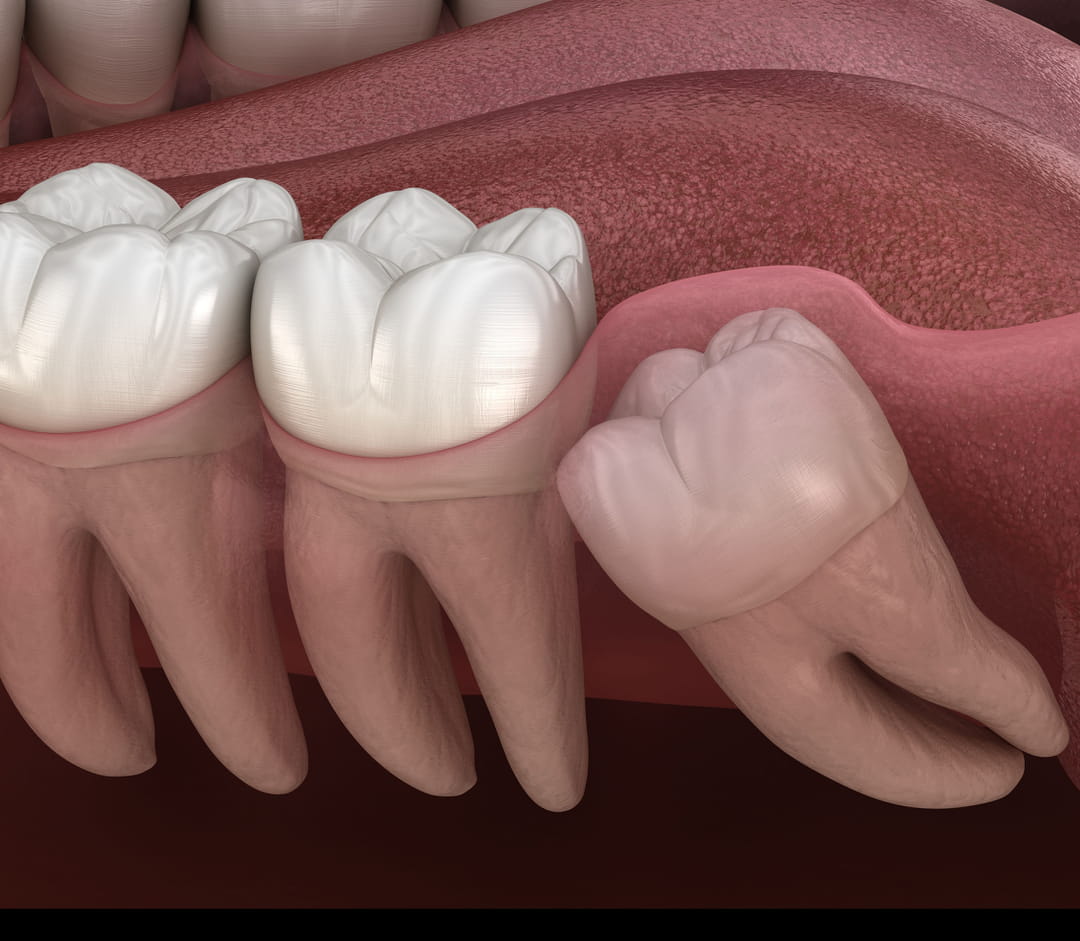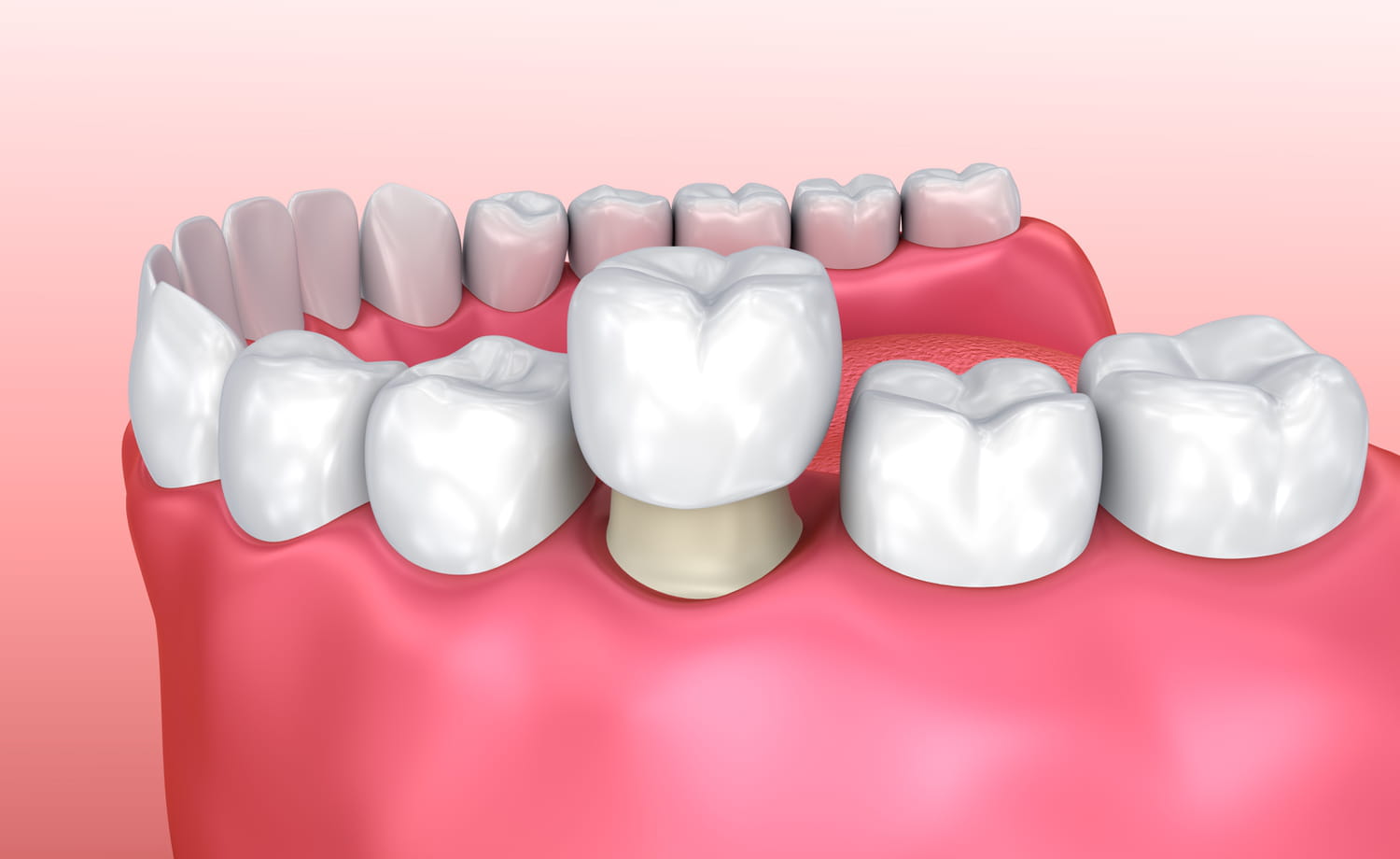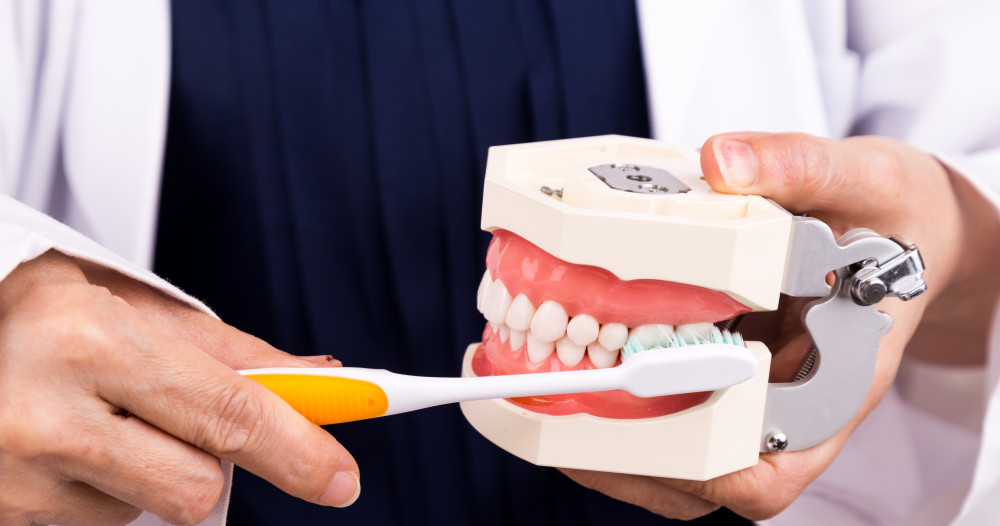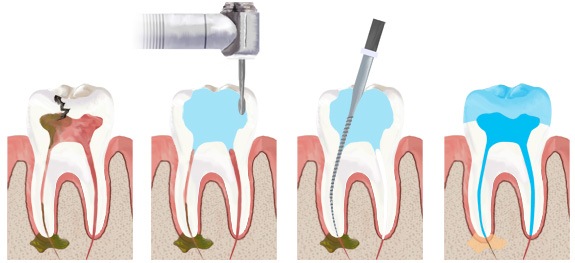-
Dental Veneers
Are you embarrassed by your smile?
Teeth that are too short, too long, the spaces between them, stains or shades that resist whitening, slight misalignments can be corrected by veneers.
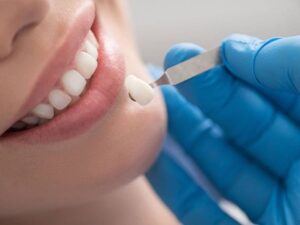
What are veneers?
Veneers are thin layers of ceramic that are attached to the teeth. It is a durable and painless technique. The allusion to contact lenses is used to give us the idea of its very thin thickness, adaptation and naturalness.
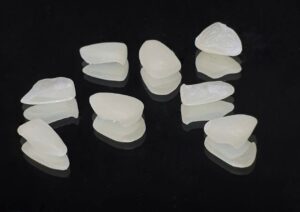
How does the treatment take place?
During the treatment, the dentist will make a simulation of the veneers that will be placed in the mouth. If necessary, modifications and adjustments can be made.
Once the prosthetic project is approved (the form, the tint, with or without size, …) the dentist will implement the necessary steps to obtain the ceramic veneers.
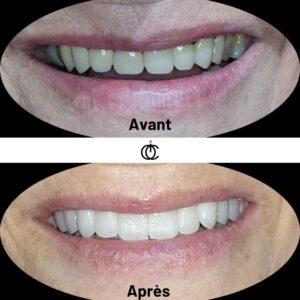
What about maintenance?
Check-ups with your dentist every 6 to 12 months, with the need to floss and brush for daily oral hygiene.
Dr Sara BOUZOUBAA
-
Extraction
Why must I extract my tooth ?
Sometimes teeth must be extracted due to an advanced stage of decay that makes restoration of the tooth impossible, a disease of the bone tissue supporting the tooth or dental trauma.
Tooth extraction will either be simple or surgical, depending on whether your tooth is visible, deteriorated or traumatized.
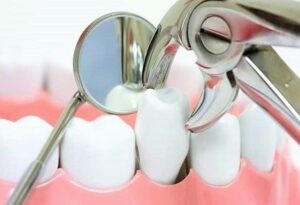
What is a Simple extraction ?
After applying a local anesthetic, which numbs the area around the tooth the patient will feel only pressure, without pain, during the procedure. Then the dentist uses specific instruments to loosen the tooth and remove it.
What is a Surgical extraction ?
The patient receives local anesthetic then the dentist will make a little incision to have a simple access to the tooth. The dentist may need to remove bone around the tooth or separate the roots of the tooth for an easier extraction and avoid complications.
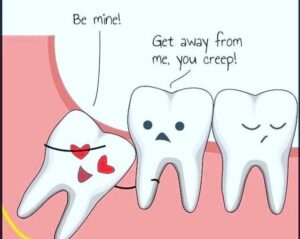
Why do I hear that people should extract their wisdom teeth ?
Actually the wisdom teeth may not need to be removed if they are healthy(with no decay), fully erupted and able to be cleaned properly.
Sometimes, wisdom teeth don’t have room to emerge normally and can cause dental problems.
Food and bacteria can get trammed around the edge of the wisdom teeth causing a build-up of plaque which can lead to tooth decay, gum disease, oral infection and damage nearby teeth.
But if the wisdom teeth aren’t causing any problem there is no need to be removed.
Dose it hurt after an extraction ?
After the extraction it’s normal to feel some discomfort or pain. Normally the painkillers help to reduce these symptoms.
If your discomfort/pain doesn’t disapear in 2 or 3 days folowing the extraction or worsen several day later you have to avoid the sefl medication and get in touch with your dentist so he can manage the situation in the right way.
What should I do after getting my tooth extracted ?
There are a few tips you have to follow after a tooth extraction:
- Leave the gause pad in place at least 30 minutes after the extraction.
- Apply an ice bag on the cheek to avoid the swellin but only for 10 minutes at a time and don’t put it directly on your face this may lead to ice burn.
- Rest for 24 hours following the extraction (limited activity).
- Don’t rinse, spit or use a straw for 24 hours after the extraction to avoid dislodging the blood clot.
- Avoid smoking.
- Continue brushing and flossing the teeth except the extraction aera.
Dr Ibtissame BOUBKAR
-
Orthodontic Treatment
Orthodontic treatment is a dental specialty dedicated to correcting the malpositioning of the jaws (dentofacial orthopedics, or ODF) and teeth (orthodontics).
The goal of orthodontic treatment is to align your misaligned teeth.

Teeth that are in the wrong position are more difficult to clean and are more likely to be lost prematurely due to cavities and/or periodontal disease. These misalignments can lead to muscle tension that can cause headaches, temporomandibular joint disorders and neck, shoulder and back pain. Misaligned teeth can also seriously affect the beauty of a smile.
Misalignments can be:
- of genetic origin;
- of functional origins such as thumb sucking, prolonged use of a pacifier or mouth breathing;
- Due to dental congestion caused by lack of space.
To correct these malpositions, and after having cleaned up the entire oral cavity, the practitioner begins by performing an orthodontic examination (X-rays, intra and extra oral photos, as well as dental impressions). An orthodontic check-up is then established, and the treatment plan is explained to the patient, who only has to choose the type of appliance in consultation with the orthodontist.
The length of the treatment will depend on several factors such as the patient’s cooperation with the orthodontic treatment and the degree of complexity of the problem to be corrected. Treatments can last from six months for the simplest treatments to several years for the most complex treatments.
Orthodontic treatment always ends with a retention phase.


It consists in maintaining the teeth in the ideal position at the end of the treatment by using a discreet metal wire glued on the inner face of the upper and lower teeth, from canine to canine. A transparent mouthpiece will also be made in the laboratory. It will be worn for the first few months after the braces are removed, and then temporarily in case the retention wire breaks while waiting for it to be repaired.
Frequently asked questions :
Is orthodontic treatment painful?
The placement of braces is almost painless. However, some discomfort may appear in the days following each activation. This must be distinguished from irritation of the mucous membranes (lips, cheeks) by the braces, which may occur at the beginning of the treatment. Orthodontic wax can be used to solve the problem while waiting for the tissues to adapt.
What is the cost of orthodontic treatment?
The cost depends on the type of appliance used and the duration of the treatment. A written estimate is systematically established after the discussion of the orthodontic assessment.
Dr Fidae ABUHASSAN
-
Whitening
Tooth bleaching is a technique used to lighten the initial color of the tooth.
Although this technique is generally easy and without complications, it is necessary before proceeding, to do a clinical examination in order to have a clean oral cavity (decay’s cleaning, scaling…).
Once these two criteria are met, 2 options are proposed to you:
-A chairside bleaching:
It lasts an average of 45 minutes and provides an instant result.
The protocol for this type of bleaching is very simple, the dentist begins by
protecting your lips and gums so that only your teeth are exposed, then the dentist applies a whitening gel and leaves it on for 45 minutes, and that’s it!
Your dentist can also suggest that you complete your bleaching with the help of a dental tray and a gel that you will wear for a week.
Advantages :
-Immediate result
-Time saving
For a faster result ,the dentist applies the bleaching gel , and that’s it !
At-home bleaching with trays:
Rest assured, teeth bleaching with trays is just as professional as chairside bleaching because it is prescribed by a dentist.
, thus guaranteeing you a treatment that is adapted to your needs and a safe follow-u.
However, unlike chairside bleaching, the results are not immediate, but gradually improves during the treatment; teeth shade become lighter after each use.
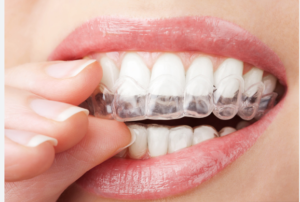
FREQUENTLY ASKED QUESTIONS :
1-Why do I need to have a bleaching procedure?
You have the impression of having yellow teeth and you wish to have a bright smile?
Bleaching is your miracle solution.
However, you must keep in mind that staining due to cavities or other causes will not disappear with the help of bleaching, hence the need of a clinical examination.
2-Why does the intensity of whiteness differ from one patient to another?
It is necessary to know that tooth bleaching allows to reach the natural shade of the teeth, determined by the genes of each person, and cannot go beyond this shade.
Each person reacts differently to the treatment, but as a general rule, teeth that are medium yellow before the treatment will have a better chance of reaching a much lighter.
3-Is this procedure safe?
As long as the bleaching is done under the supervision of your dentist with regular monitoring
and proper dosage, bleaching will be safe. However, the treatment is still
prohibited for children and pregnant women.
4-I have teeth sensitivity, can i get them bleached?
Yes !
Depending on your sensitivity, the dentist has many ways to do the bleaching
After the bleaching, my teeth got sensible, what should I do?
some patients experience sensitivities during or after the bleaching (ex: to cold,air…),
but rest assured, this is normal!
Sensitivities dissipate over time, and if they last and start to bother you, your dentist may recommend desensitizing gels.
5- How long does bleaching last?
The result can last from 1 to 2 years on average, depending on oral hygiene and lifestyle habits (tobacco – coffee – alcohol).
Dr Zineb DOUISSI
-
What is a Periodontitis
Periodontitis is a serious infection and inflammation of the gums and bone that supports the teeth.
In the early stages it is called gingivitis and it damages the soft tissue causing the gums to swell and bleed. And without treatment it develops into a periodontitis that could destroy the surrounding of the teeth leading to loosening of the tooth or even tooth loss.
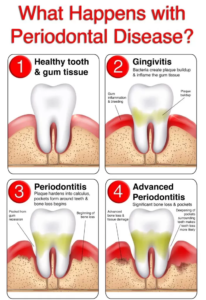
What causes periodontitis?
Periodontitis is typically caused by poor dental hygiene which increases bacteria concentration around the teeth, forming a film called plaque eventually hardening to tartar that builds up and spreads below the gum line, making the teeth harder to clean. A professional intervention is then necessary to remove all the accumulated tartar and plaque to stop the progression of the bacteria
What are the symptoms of periodontitis?
- Bleeding of the gums when brushing
- Red swolen gums
- Bad breath
- Pain when chewing
- Receding gums
- Sensitive teeth
- Tooth mobility or even tooth loss
Prevention and treatment
Gingivitis can be controlled and treated with good oral hygiene and regular professional descaling. More advanced forms of periodontal disease can also be treated successfully but may require more extensive treatments. Such treatments might include deep cleaning of the tooth root surfaces below the gums, oral medications , and sometimes corrective surgery.
Dr CHRAIBI Saad
-
Digital in Dentistry?
What is digital in dentistry?
Digital dentistry consists of using computer and technological tools such as 3D printers, various softwares, digital radiology or scanners with the ultimate goal of improving dental care and patient comfort.
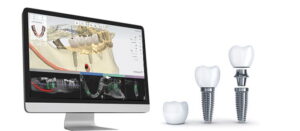
Why use digital technology in dentistry?
- Time saving
- Accurate diagnosis
- High precision
- Patient’s satisfaction and comfort
- Improved dentist-patient communication
How is dental care performed in the digital age?
At first, the impression is taken by an intraoral camera (instead of the classic impression) to collect the exact morphology of the patient’s teeth.
The next step is to design the prosthesis more accurately by computer software.
The final step is to manufacture the prosthesis using a 3D printer for dental use.
In which dental care can digital be used?
- In fixed and removable prosthesis (crowns, veneers etc.): to replace one or more missing teeth
- In implantology (guided implantology): to place dental implants using a digitally created guide
- In orthodontics (using aligners): to correct the positioning of the teeth
Dr EZZAHOUANI Badr
-
Dental Implant
What is the dental implant ?
A dental implant is an artificial root most often made of titanium that will be placed in the alveolar bone to replace one or more missing teeth. It is inserted into the jawbone. Because of its biocompatibility, the bone will attach to this implant solidly, which gives a very good stability for a dental prosthesis.

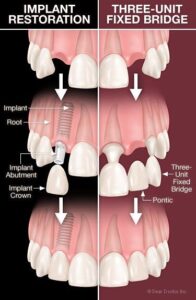
The implant makes it possible to replace a missing tooth in a very aesthetic way with a very comfortable result because the tooth is fixed and independent of its neighbors, like a natural tooth. The dental implant also makes it possible to fix other types of dental prostheses: crown, bridge, denture. On this artificial root will rest a fixed dental prosthesis (often a ceramic crown). This technique is not new but is developing more and more.
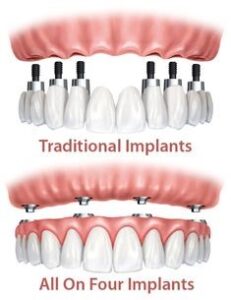


After the dental implant procedure:
- Carefully follow the oral hygiene instructions given to you by your dental provider. Regularly cleaning the implant and surrounding teeth is very important for long-term success of the implant.
- Schedule regular visits with your dental provider.
- If your implant feels loose or painful, tell your dentist right away
Benefits of Dental Implant Systems:
- Restores the ability to chew
- Restores cosmetic appearance
- Helps keep the jawbone from shrinking due to bone loss
- Preserves the health of the surrounding bone and gums
- Helps keep adjacent (nearby) teeth stable
- Improves quality of life
Why place an implant?
- Replacing your teeth isnot only an aesthetic act. A missing tooth is also, very often, difficulties in chewing, a displacement of adjacent teeth that tend to pour, or to rise. This results in an increased risk of cavities and a loss of the natural gear of the teeth.
(Guided Implant)
Teeth-in-an-hour is a technique that can reduce the implant treatment time significantly. Thanks to new technology that allows us, it is possible to have dental implants and new, fully functioning teeth in the same appointment.
An essential part of the technique is the sophisticated radiographic techniques combined with computer technology to enable precise surgical placement of the implants. Detailed 3-D imaging is helping us very much. And this system allows us to assess bone structure accurately, map out the areas of best bone integrity, decide the exact position of implants, and even create a permanent prosthesis before the dental implant surgery.
Computer Guided Implants use 3/D Volumetric Tomography photos, which are input into a computer simulation program. The process is painless and quick and doesn’t require any surgical intervention.
Computer Guided Implantology (CGI) is a popular method of treatment that has been proven safe and effectiveGuided Implant Planning is based on three-dimensional images. This eliminates all uncertainty and risks. This technology has the main advantage of allowing the dentist to plan the procedure before it’s applied to the patient. This eliminates any potential errors and saves time.
-
Total Removable Prosthesis
What is a total removable prosthesis ?
The total removable prosthesis is a dental device that aims to replace an arch that is completely devoid of teeth. It restores the patient’s smile, phonation and chewing. It relies on the mucosa to ensure its stability. Once in place, it requires a period of adaptation in the mouth so that it is completely retentive.
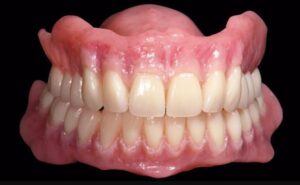
What is the temporary removable prosthesis?
The temporary removable prosthesis is a temporary dental device which has the advantage of replacing one or more missing teeth and restoring aesthetics and function while waiting to switch to a fixed device which is the implant or removable which is the stelite. It needs to be readjusted as the gum on which it is placed changes shape.
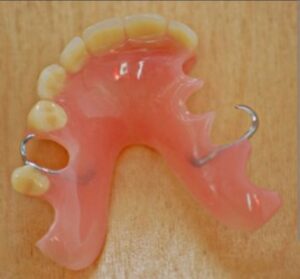
What is a dental Stellite ?
A dental stellite is a removable device that aims to replace one or more teeth permanently in order to restore the smile and chewing. It uses hooks which may or may not be visible depending on the case.

Dr TSOULI Simohammed
-
Partial & Total Removable Dentures
Partial & Total Removable Dentures
Partial Removable Prosthesis:
It is a prosthesis that replaces one or more teeth, temporarily or permanently. Its retention and stability are given by the teeth still present in the mouth.
Total Removable Dentures:
When the patient has lost all his teeth, their replacement can be done with this type of prosthesis. It will have a total support on the mucosa through a suction cup effect. It can be used on a temporary basis when in the preparation stage for implant treatments.
-
Partial crowns & full crowns
Partial crowns & full crowns
Partial Crown
By respecting the residual dental tissue, partial crowns allow much less invasive and biomechanically more favorable treatments by leaving intact the dental walls unaffected by decay or fracture. They are classified in Crowns:
- ¾ Metallic:
- ¾ Ceramic:
- The 7/8 ceramic:
Total Crowns:
It is used when the state of decay of the tooth is important, with absence of walls allowing the previous techniques. It is important that there remains a minimum of 2 mm of dental tissue all around the base of the tooth for the fixation of the crown. This small amount of tissue will give us less risk of fracture and ensure greater longevity of the tooth/crown assembly. Crowns can be made of metal, metal and ceramic, or ceramic alone.
